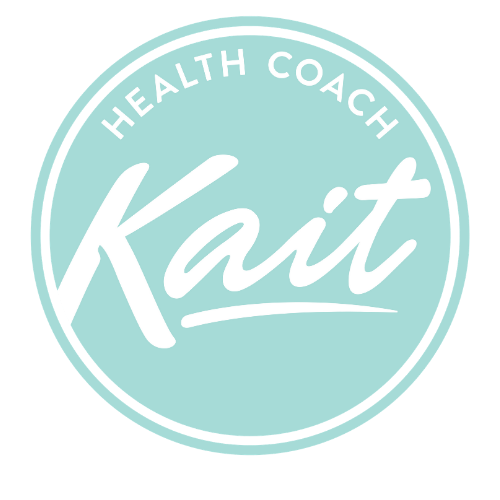5 Science-Backed Ways to Trigger Autophagy Without Fasting
Can you really activate autophagy without fasting?
Absolutely. While fasting is one of the most well-known ways to trigger autophagy, it’s not the only one—and for many people, it’s not always realistic or sustainable. The good news is, there are research-backed strategies that support this powerful cellular process without needing to skip meals.
In this article, you’ll learn five science-supported ways to activate autophagy without fasting. Each one is practical, accessible, and easy to integrate into your daily routine to support better energy, focus, fat loss, and healthy aging.
What Is Autophagy?
Autophagy is your body’s natural process for cleaning out damaged cells and regenerating new, healthy ones. The word autophagy literally means “self-eating,” and while it might sound intense, it’s actually a critical mechanism for cellular repair and detoxification.
This internal housekeeping process helps:
Improve metabolic efficiency
Boost energy and focus
Reduce inflammation
Support longevity
Protect against chronic disease
Most people associate autophagy with long periods of fasting, but emerging research shows that you can activate this process in several other ways—without going hungry.
1. Eat More Polyphenols
Polyphenols are powerful plant compounds that can mimic the effects of fasting by activating the same cellular pathways—like AMPK and sirtuins—that regulate energy, repair, and longevity.
Some of the best polyphenols for triggering autophagy include:
EGCG from green tea
Berberine, a natural compound that also supports blood sugar balance and metabolic health
How to get started:
Sip green tea in the morning or after meals
Cook with turmeric or take a curcumin supplement
Consider berberine if you’re dealing with insulin resistance or metabolic dysfunction
These small, daily choices can add up to powerful results at the cellular level.
2. Use Heat Therapy (Saunas, Hot Baths)
Heat exposure is another effective, research-backed way to activate autophagy. When your body is exposed to high temperatures, it produces heat shock proteins that help protect and repair your cells.
Regular sauna use has been linked to lower risks of:
Cardiovascular disease
Alzheimer’s disease
All-cause mortality
You don’t need a traditional sauna to benefit. A hot bath or infrared sauna blanket can offer similar effects.
What to do:
Spend 15 to 20 minutes in a sauna, hot bath, or infrared sauna blanket
Aim for 3 to 4 sessions per week
Break a sweat to ensure your body is responding
For extra benefits, pair heat therapy with polyphenols like green tea for a synergistic boost.
3. Try Red Light Therapy
Red and near-infrared light therapy enhances mitochondrial function, reduces oxidative stress, and triggers autophagy by stimulating energy production (ATP) and repair processes.
Red light therapy has been shown to:
Support skin health and elasticity
Improve muscle recovery
Reduce inflammation
Support hormone and brain health
The system I personally use and recommend is the Megelin Red Light Therapy Bag. It’s a full-body, flexible red light device you can use while lying down, journaling, or winding down in the evening.
Daily use takes just 15 to 20 minutes and can be a powerful addition to your recovery and wellness routine.
4. Exercise (Especially Zone 2)
Exercise is one of the most natural and effective ways to trigger autophagy. It activates AMPK and reduces mTOR activity—two of the key regulators of cellular repair and regeneration.
Both high-intensity training and moderate cardio are effective:
Zone 2 cardio (steady, moderate intensity) improves mitochondrial efficiency and supports long-term fat metabolism
HIIT (High-Intensity Interval Training) stimulates autophagy quickly and efficiently
You can amplify your results by pairing exercise with polyphenols like green tea or a berberine supplement post-workout.
5. Prioritize Deep, Restorative Sleep
Autophagy ramps up during deep sleep—especially in the brain, where the glymphatic system clears out waste and toxins. Poor sleep can interfere with your body’s ability to repair and regenerate, even if your other habits are on point.
To improve your sleep and boost autophagy:
Keep your bedroom cool, dark, and quiet
Avoid screens and blue light 1–2 hours before bed
Finish eating 2 to 3 hours before sleep
Use red light therapy in the evening to support melatonin production
Deep sleep is when your body performs its most critical recovery work. Optimizing this time can have a significant impact on your overall health and metabolism.
Final Thoughts
You don’t need to fast to experience the benefits of autophagy. These five strategies are scientifically supported and realistic for most lifestyles:
Polyphenols like EGCG and berberine
Heat therapy using saunas or hot baths
Consistent movement and exercise
Quality sleep and recovery
Start with one or two and build from there. The key is consistency. These tools don’t require restriction—they’re about supporting your body’s natural ability to heal and renew.
